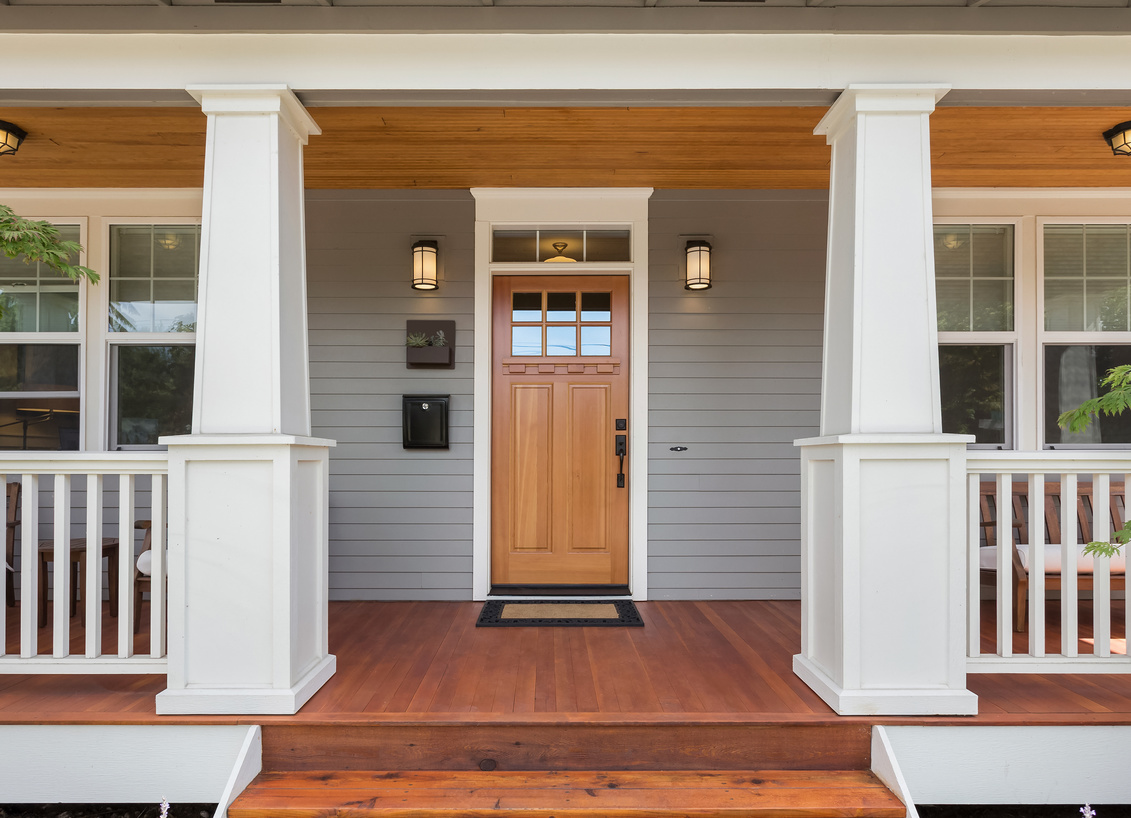In the South Western United States, Stucco is a popular style to adorn the exterior of houses with. However, residential stucco can be seen all over the world. Stucco is accomplished when a cement and plaster compound is layered with a variety of plastering tools to create a textured, topographic appearance that looks good, and doesn’t require a lot of upkeep.

This combination of style and ease makes it a preferred combo for many homeowners. When dirty, it just needs to be sprayed off with soapy water. If repairs are necessary, a fresh coat of paint can provide wonders, assuming the stucco itself isn’t chipped or cracked. To make your residential stucco look as good as new, like a contractor did it, follow these easy steps.
Preparing the Area
First, you have to prepare the area for your painting project. Place drop cloths around the area you will be painting. Don’t forget to cover furniture and other decorations, as you don’t want paint to get on anything else. Make sure to secure it. Also, put tape around your trim for a clean line.
Second, clean all the areas you plan to paint of dirt, dust, and other gunk. This generally only requires you to use a stiff broom or brush to thoroughly sweep away all of the stuff. You could also hit it with hot water and soap. If you have deep grooves on exterior stucco, this can be power washed.
Make sure everything is dry before you start. If you’re dealing with interior stucco walls, you can use a dusting attachment for your vacuum. If you encounter mold, or mildew, there are industrial stucco cleaning products out there you can use to remove it. Make sure to follow the instructions from the manufacturer.
Making Small Repairs
If you encounter any cracks or chips in your stucco repair, you can fill them with masonry caulk. For any cracks larger than 1/6th of an inch, you should use a patch. Any loose material can be removed with a putty knife, and then patch it with a patching compound. However, if you have to go this route, it could take a long time before you can start painting, as it takes a while to set. For more home improvement ideas, see our post on hiring a concrete contractor.
The Painting Process
Once everything is cleaned, and small repairs are made, use a synthetic brush and a roller to prime the stucco with acrylic primer. You should use acrylic primers and paints because their compounds stick better to the uneven texture of stucco. This will probably require additional coats for complete coverage. Remember, it’s best to apply multiple thin layers, rather than one thick one. This avoids painting from pooling in areas, and causing unsightly drops. Make sure you read the directions for the particular primer you are using, as drying times when painting stucco vary.
Residential stucco has a larger surface area than a normal wall. Therefore, you’ll need more paint to cover it. A good rule of thumb is to divide the amount of flat wall surface area by 2 to get an appropriate painting job. For instance if a half gallon of paint says that it will provide 200 square feet, with stucco, it will probably only cover 100.
A similar process you used to prime your walls can be used to paint them. Use a synthetic brush to get into the crevices, and a large roller to cover a large amount of surface area at once. Apply as many layers of paint as necessary to achieve the look you are going for. Make sure to follow the paint manufacturers guide for appropriate drying times.
Hiring a Stucco Contractor
Even though it’s a daunting task to paint multiple walls of stucco, if done properly, an acrylic paint job should last 15-20 years on your exterior, and an indefinite amount of time on your interior. However, while it may seem simple, due to there being many nooks and crannies, as well as the damage that acrylic paint can do to anything else it gets on, it may be smart to hire a stucco contractor to do the work. Stucco contractors are seasoned professionals who make sure that none of these steps are missed, and that your stucco painting lasts as long as possible.
